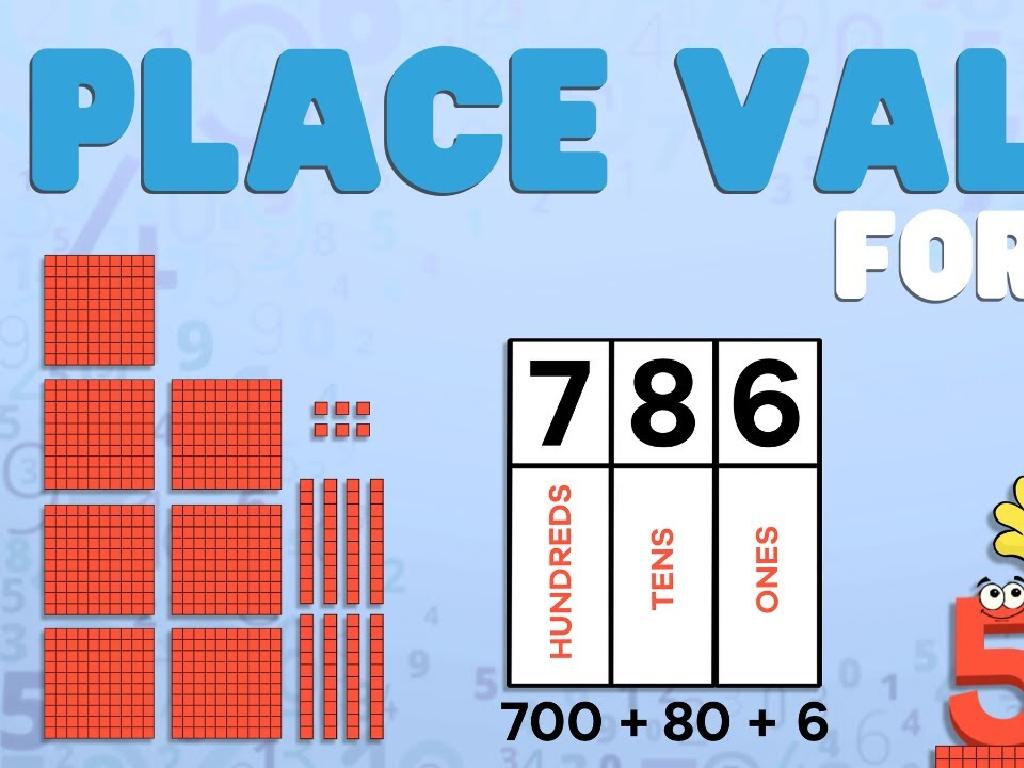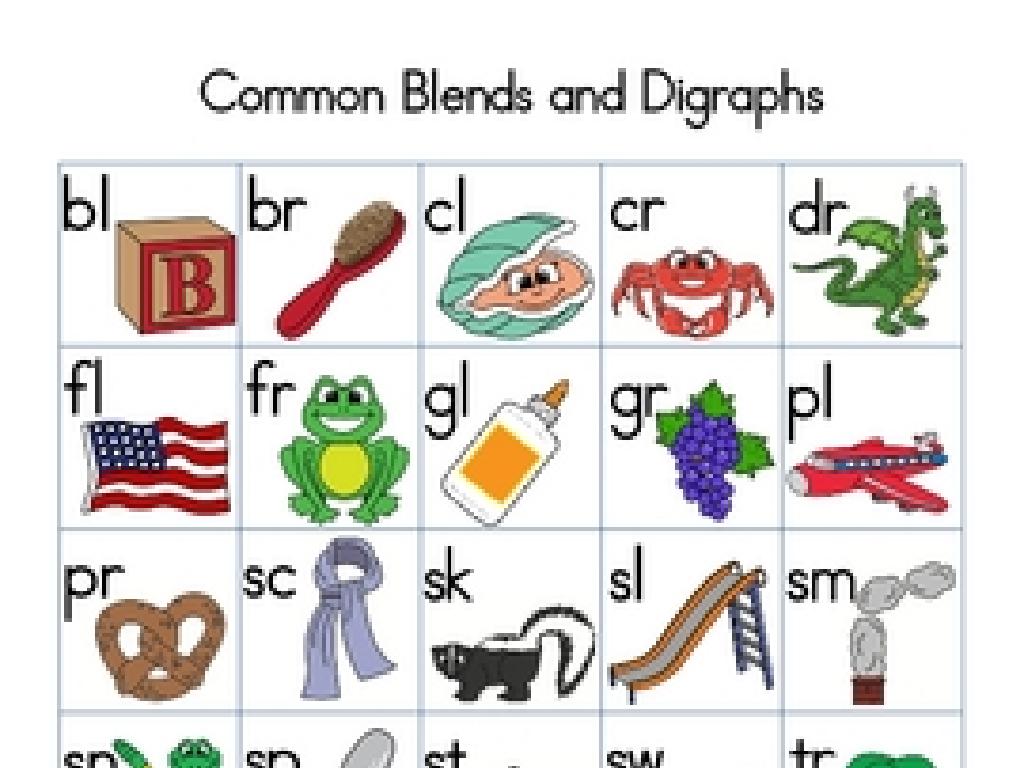Observe Traits
Subject: Science
Grade: First grade
Topic: Traits
Please LOG IN to download the presentation. Access is available to registered users only.
View More Content
Exploring Our Unique Traits
– What are ‘Traits’?
– Traits are features or qualities we have.
– Traits make us special
– Like hair color, height, or favorite foods!
– Observing our traits
– We’ll look at our own and our friends’ traits.
– Celebrating uniqueness
– Everyone is different, and that’s great!
|
This slide introduces the concept of traits to first graders, emphasizing the uniqueness of each individual. Traits are characteristics or features that can be physical (like eye color or height) or related to personality (like being funny or shy). The goal is to help students recognize and appreciate the diversity in their classroom. Encourage them to observe their own traits and those of their classmates in a respectful and appreciative way. This lesson will set the foundation for understanding diversity and the beauty of individual differences.
What Are Traits?
– Traits make you unique
– Examples: Eye color, nose shape
– Like blue eyes, or a round nose
– Traits come from our families
– Your parents pass them to you
– Everyone’s traits are special
– This is what makes you, you!
|
This slide introduces the concept of traits to first graders. Traits are characteristics or features that make each person unique. Use simple examples that children can relate to, such as eye color, nose shape, and height. Explain that these traits are inherited from their parents and other family members, which is why family members may look alike. Emphasize that everyone’s traits are special and make them who they are. Encourage the children to think about their own traits and those of their classmates to celebrate diversity and individuality.
Observing Traits Around Us
– Traits in animals and plants
– Traits are special features like colors or shapes
– Examples: fur color and petal shape
– A cat can have black, white, or spotted fur; a flower can have round or pointy petals
– Be detectives in our classroom
– Look around and find traits in our class pets or plants
– Discover traits we can see
|
This slide introduces the concept of traits to first graders by relating it to familiar objects like animals and plants. It’s important to explain that traits are characteristics or features that can be observed, such as the color of a cat’s fur or the shape of a flower’s petals. Encourage the students to be ‘trait detectives’ in their own classroom, looking for and identifying different traits they can find, such as the colors of their classmates’ eyes or the types of plants on the windowsill. This activity will help them understand that traits are all around us and are not limited to just people. Provide guidance on how to respectfully observe traits in classmates without making personal comments.
Traits We Can See
– Hair color is a visible trait
– Like brown, blonde, or red hair
– Leaf shapes vary widely
– Like maple, oak, or pine leaves
– Observe traits with our eyes
– Use observation to notice differences
– List traits in classmates
|
This slide is aimed at helping first-grade students understand that traits are characteristics we can observe. Start by explaining that traits are features we can see, such as hair color or the shape of leaves on different trees. Encourage the students to use their sense of sight to identify various traits in the classroom. For an interactive activity, have the students list traits they observe in themselves and their classmates, such as hair color, eye color, or even types of shoes. This will help them grasp the concept of observable traits and how they can vary from person to person or from one living thing to another.
Hidden Traits: Discovering Our Invisible Qualities
– Some traits are not visible
– Like how fast you run or your singing talent
– Traits show during activities
– Like running in a race or singing a song
– Think of an unseen trait
– Share your ideas in class
|
This slide introduces the concept of non-physical traits to first graders. Explain that not all traits are about how we look; some are about what we can do. Use relatable examples like running speed or singing ability to illustrate traits that come out during certain activities. Encourage the students to think of their own examples of traits that can’t be seen with the eyes. In the next class, create a comfortable environment for students to share their thoughts and discuss the variety of hidden traits they’ve thought of. This activity will help them understand the diversity of traits among their classmates.
Unique and Shared Traits
– Traits can be common
– Like many people having brown eyes
– Some traits are unique
– Like a one-of-a-kind birthmark
– Everyone’s traits mix
– Celebrate our differences!
– Our traits make us special and unique
|
This slide aims to teach first graders about the concept of traits, which are characteristics or features that can be common or unique among individuals. Use simple examples that children can relate to, such as common traits like eye color or unique ones like a birthmark. Emphasize that each person is a special combination of different traits, which makes them unique. Encourage the children to think about their own traits and those of their classmates, fostering an appreciation for diversity. You can plan a class activity where students draw portraits of themselves highlighting both shared and unique traits to reinforce the lesson.
Class Activity: Trait Scavenger Hunt
– We’re having a scavenger hunt!
– You’ll get a trait checklist
– A list of traits like hair color, eye color, etc.
– Observe your classmates’ traits
– Look around and match traits with your friends
– Be kind and celebrate uniqueness!
– Everyone is special in their own way
|
This activity is designed to help students observe and appreciate the diversity of traits among their peers. Distribute a simple checklist with easily observable traits such as hair color, eye color, or wearing glasses. Guide the students to observe their classmates discreetly and check off the traits they find. Emphasize the importance of being respectful and kind during the activity. After the scavenger hunt, facilitate a discussion about how our differences make us unique and special. Prepare to offer support and ensure a positive experience for all students. Possible variations of the activity could include finding traits in storybook characters, plants, or animals if direct observation is not suitable.
Celebrating Our Unique Traits
– We all have unique traits
– Observing traits teaches understanding
– Traits like hair color, height, and eye shape make us who we are.
– Appreciation for everyone’s differences
– Learning about traits helps us see the beauty in diversity.
– Keep observing as scientists
|
This slide wraps up the lesson on traits by emphasizing the uniqueness and diversity of individual traits. It’s important to reinforce the idea that our differences are what make us special and that by observing and learning about these traits, we can grow to understand and appreciate each other better. Encourage the students to continue observing the world around them with the curiosity of a scientist, always eager to learn and discover more about the people and environment they interact with.






